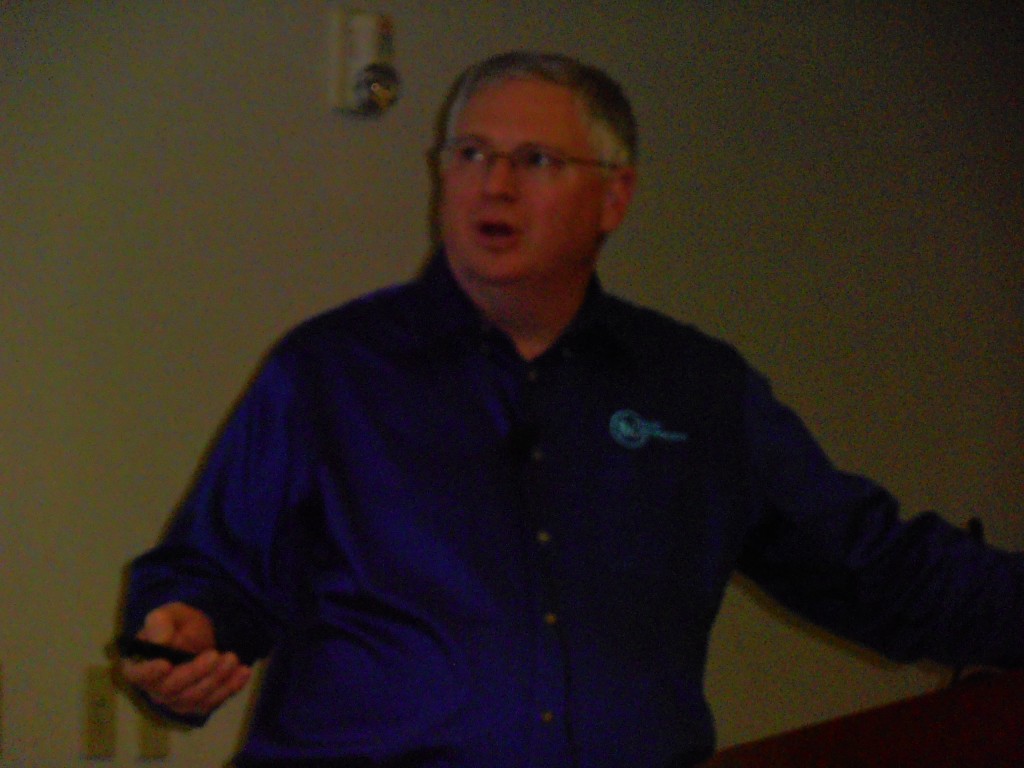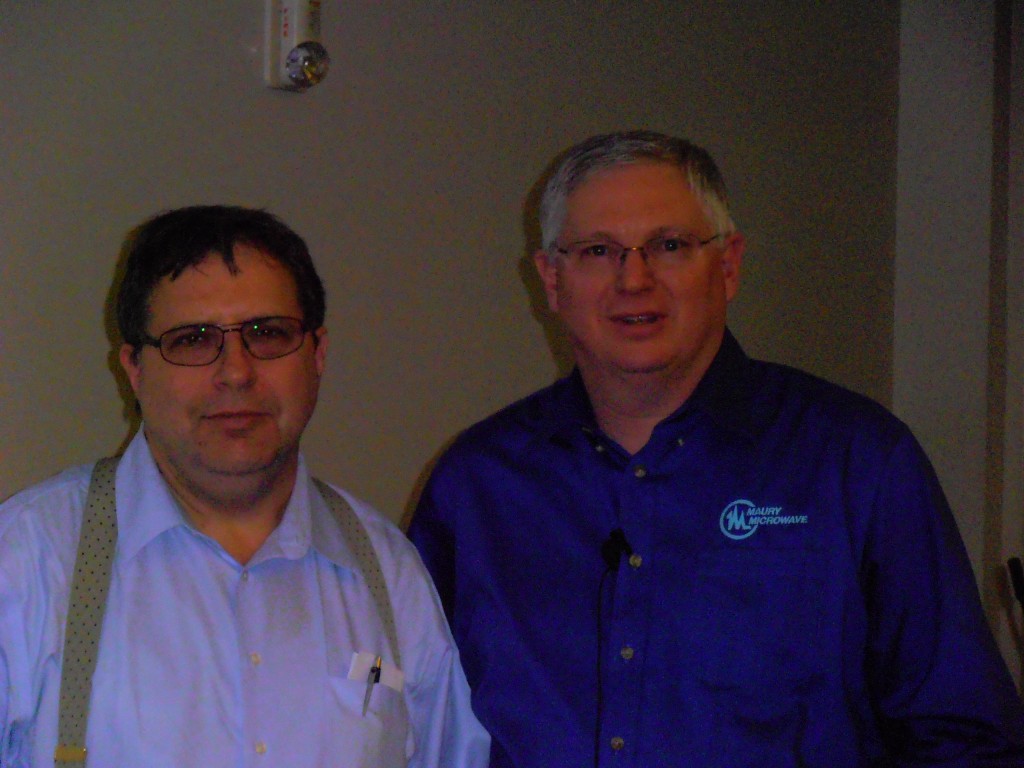IEEE Foothill hosts a Session on High Frequency Calibration 01/31/2013
| February 6, 2013 | Posted by Frank Gomez under COMSOC, EDCAS, MTT/APS |
Comments off
|
Thursday evening, January 31, 2013 was an opportunity for many members of the IEEE Foothill Section to be brought up to date on RF Calibration at California Baptist University-Riverside. Our speaker, Rusty Myers from Maury Microwave in nearby Ontario, CA, covered the topic, from concept to theory to actual practice. This included a discussion of the pitfalls that can occur when some typical, but unwanted, errors in bench testing technique occur.
As Mr Myers described his subject, we are ultimately trying to “nail down” the accuracy for a Vector Network Analyze (VNA). To do this we need to develop standards and models for the proper frequency band –rated coax and waveguide components. These components in turn will be used to calibrate the VNA.
The entire range of potential errors was explored: Systematic (reflections from various mismatched impedances), Random (noise, connector repeatability, cable deviations); and Drift and Instabilities (instrument drift, temperature drift).
Next was a review of both two port and four port calibration theory. Our members learnt what” Short-Open-Load” for a two port measurement meant, and “Thru-Reflection-Load” for a four port measurement meant, and why they were necessary. (Hint to help our IEEE students remember: Independent data needed to determine the number of unknowns in the sets of linear equations dictates what must be done.)
Especially useful was Mr Myers’s discussion of the signal trace data (reflection terms versus frequency, with typical data displayed from >0 GHz up to 18 GHz) showing some possible measurement errors. A discussion of some practical considerations (incorrect torqueing of calibrated waveguide components while being connected to a VNA; the effects of dirt in coaxial pin connections; and damaged waveguide mating surfaces) completed the calibration picture.
All our Foothill Section member attendees thank Rusty Myers for his excellent presentation. We now have a better appreciation of what is involved when we ask for a specific accuracy number from a VNA measurement as part of our work tasks.

